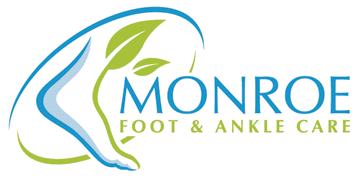Warts are noncancerous growths. They form in the epidermis (top layer of your skin) due to an infection with some strains of the human papillomavirus (HPV). They’re named by where they’re located on the body — on the hands, they’re called palmar warts, and on the soles of the feet, they’re called plantar warts.
Plantar warts form when the virus penetrates the skin on the soles of your feet through small cuts that could come from any number of sources. Your weight places almost continual pressure on the area, causing the skin to become thick and callused. Plantar warts aren’t inherently harmful, but they may cause some irritation or pain, or some minor bleeding.
Plantar warts become a medical problem if they cause you pain, because that could make you shift the way you stand and walk, leading to complications with your body mechanics.
At Monroe Foot & Ankle Care in Jamesburg, New Jersey, podiatric surgeon Dr. Elliott Perel and his team understand that while plantar warts aren’t generally a medical problem, they can make you feel uncomfortable, which is why they offer a variety of treatments.
How is the virus transmitted?
The HPV strains that cause plantar warts aren’t the same ones that cause genital warts. They aren’t highly contagious or easily transmissible. In fact, some people who come in contact with HPV don’t go on to develop warts.
HPV thrives in warm, moist environments — swimming pools and locker rooms are ideal for it. If you walk around these areas barefoot, you’re more at risk of contracting the virus. The wart forms where the virus enters the skin, but it can spread to other sites, creating new warts as it goes.
Plantar warts are most common in:
- Children and teenagers
- People with weakened immune systems
- People who’ve had previous plantar warts
- People who walk without foot protection in locker rooms
What do plantar warts look and feel like?
If you have a plantar wart, you’ll probably notice:
- A small, fleshy, and rough growth on the sole of your foot, often at the heel or the base of the toes and forefoot
- A growth crossing the normal ridges and lines in the skin
- A hard callus over a well-defined “spot,” where the wart has grown into the foot
- Black spots: small, clotted blood vessels often called “wart seeds”
- Pain or tenderness when standing or walking
How do you treat plantar warts?
A lot of warts clear up by themselves, usually within a two-year period. However, if you’re experiencing pain or irritation, you may want to have the warts removed.
There are a number of home remedies for wart removal, including duct tape, banana peels, and an OTC freezing spray to kill wart tissue. All are only moderately successful, and they take months to see any significant reduction.
You’ll have much more success with an in-office doctor’s treatment. Dr. Perel uses:
Salicylic acid and trichloroacetic acid
The doctor applies prescription-strength salicylic acid to the wart, dissolving it layer by layer. The acid can also trigger your body’s immune system to fight the underlying infection. This method often requires a series of treatments. If you don’t respond after the series, Dr. Perel may use the stronger trichloroacetic acid.
Cryotherapy
This technique removes warts by freezing them off with liquid nitrogen, which destroys the wart’s structure. Dr. Perel applies it gently to just the wart tissue, which will blister and then slough off in about a week. Combining cryotherapy with salicylic acid is even more effective, but you still may require several treatments.
Lasers
A beam of laser energy burns a wart’s blood vessels. Without these to provide nutrition, the wart dies and falls off.
Minor surgery
Dr. Perel uses a scalpel to cut away the growth, reducing your risk for developing new plantar warts. Any scars from the procedure fade away with time.
If you’ve got warts on your feet and want them removed, your best bet is to come in and see Dr. Perel. Give the office a call at 732-521-6166, or schedule your appointment online today.
